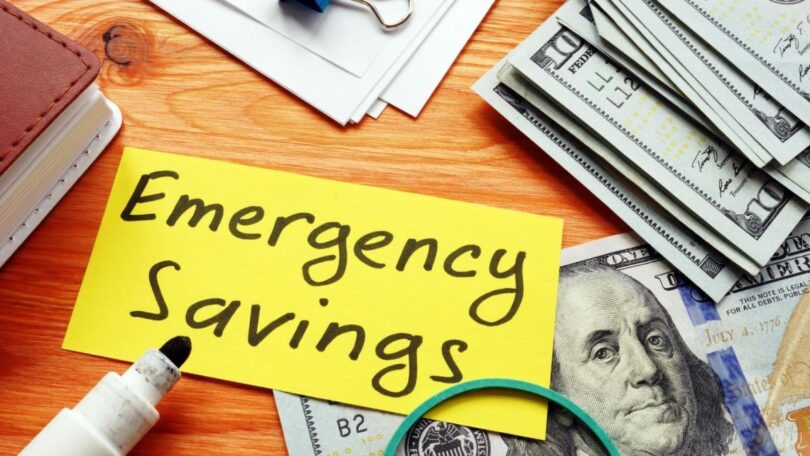Financial security doesn’t happen by accident—it’s planned. Whether you’re aiming to weather unexpected expenses or job loss, building a 6-month emergency fund is one of the best ways to safeguard your financial health. But how do you actually build this critical safety net, and why is it so essential? In this guide, we’ll take a step-by-step approach to saving and preparing for life’s unpredictable twists and turns.
The Importance of a 6-Month Emergency Fund
An emergency fund is your financial safety net, designed to cover essential expenses when unexpected events strike. Whether it’s medical bills, car repairs, or a sudden job loss, having a fund that can cover six months’ worth of living expenses gives you peace of mind and flexibility. A well-planned emergency fund prevents you from having to rely on high-interest debt, such as credit cards or personal loans, during crises. This means you can stay focused on your long-term financial goals, like retirement savings or buying a home, without being derailed by short-term setbacks.
Assessing Your Monthly Expenses
The first step in building a 6-month emergency fund is calculating how much you need to save. Start by listing all your necessary monthly expenses. These should include:
- Rent or mortgage payments
- Utilities (electricity, water, internet, etc.)
- Groceries and basic household supplies
- Insurance (health, car, home, etc.)
- Transportation costs (gas, public transit)
- Minimum debt payments (credit cards, loans)
Once you have a total for your essential expenses, multiply it by six to get your emergency fund target. For example, if your monthly expenses total $2,500, you’ll need $15,000 in your emergency fund.
Setting Realistic Savings Goals
A 6-month emergency fund can seem like a daunting goal, but the key is to break it down into manageable chunks. Rather than focusing on the full amount right away, start with smaller, achievable goals. Set a timeline and divide your target savings amount by the number of months in that timeline. For instance, if you plan to save $15,000 in two years, you would need to save about $625 per month.
Consider automating your savings by setting up automatic transfers from your checking account to a dedicated emergency fund account. This ensures consistency in your savings without relying on willpower alone.
Choosing the Right Savings Account for Your Emergency Fund
Where you keep your emergency fund matters. Ideally, the money should be easily accessible in case of a real emergency but separate enough that you’re not tempted to dip into it for non-essentials. Look for high-yield savings accounts, which offer better interest rates than traditional savings accounts while still providing easy access to your funds.
Alternatively, you might consider a money market account or a short-term certificate of deposit (CD). Just ensure that your money isn’t locked away in accounts with penalties for early withdrawal.
Cutting Expenses to Boost Your Emergency Fund
To build your emergency fund faster, look for areas where you can cut back on unnecessary expenses. Here are some practical strategies:
- Cancel unused subscriptions: Whether it’s streaming services or gym memberships, cutting these can free up extra cash.
- Cook at home more often: Dining out frequently can quickly add up. Cooking at home is not only healthier but also much more cost-effective.
- Negotiate bills: Call your service providers (internet, phone, etc.) and ask for better rates. You’d be surprised how often you can secure a discount simply by asking.
- Delay large purchases: If something isn’t urgent, delay the purchase until after you’ve hit a significant savings milestone.
Increasing Your Income to Reach Your Savings Goal
In addition to cutting expenses, increasing your income can significantly speed up the process of building your 6-month emergency fund. Here are some ways to boost your earnings:
- Take on a side gig: Whether it’s freelance work, driving for a rideshare service, or selling items online, a side gig can provide a steady flow of extra income.
- Sell unused items: Many of us have unused or old items that could be sold on platforms like eBay, Facebook Marketplace, or Craigslist.
- Negotiate a raise: If you’ve been with your current employer for a while and have proven your worth, consider asking for a raise. A higher salary means more money that can be directed toward savings.
Avoiding Common Mistakes While Building Your Emergency Fund
One of the biggest mistakes people make is treating their emergency fund like a regular savings account. Avoid the temptation to dip into it for non-emergency expenses like vacations or splurges. Remember, this money is reserved for true emergencies, not for “nice-to-have” purchases.
Another common pitfall is underestimating your monthly expenses when calculating your emergency fund goal. Be sure to account for all necessary costs, including annual expenses like insurance premiums, which might not be part of your regular monthly budget.
Maintaining and Growing Your Emergency Fund
Once you’ve built your emergency fund, it’s important to maintain it. Review your fund regularly, especially after major life changes like a new job, a move, or a change in expenses. If you withdraw money for an emergency, make replenishing the fund a priority once you’re back on your feet.
While your emergency fund should be kept in a safe, liquid account, consider investing any surplus money beyond the 6-month cushion. You can then focus on other financial goals like retirement savings or building an investment portfolio.
Why Emergency Funds are Essential in a Financial Crisis
During times of financial uncertainty, such as economic downturns or personal crises, an emergency fund provides a critical buffer. Rather than panicking over how to cover rent or bills, you can draw from your emergency fund to stay afloat. This allows you to avoid taking on new debt or selling off assets at a loss during challenging times.
Additionally, having a fully-funded emergency fund gives you the freedom to make more strategic decisions when faced with a job loss or career change. Instead of scrambling for any available job, you can take your time finding the right opportunity.
Conclusion
Building a 6-month emergency fund is one of the most important steps you can take toward achieving financial security. By calculating your expenses, setting realistic savings goals, and making strategic financial adjustments, you can create a safety net that protects you from life’s unpredictable challenges. Whether you’re cutting expenses, increasing your income, or simply automating your savings, consistency is key to reaching your goal. Once you have your emergency fund in place, you’ll experience the peace of mind that comes with knowing you’re prepared for whatever the future may bring.
FAQs
What is the best way to start building an emergency fund?
Start by setting a realistic savings goal based on your essential monthly expenses. Automate your savings and find a high-yield savings account to keep the funds separate from everyday spending.
How much money should be in an emergency fund?
It’s recommended to have three to six months’ worth of living expenses in your emergency fund. This amount should cover your essential needs like rent, utilities, groceries, and insurance.
What qualifies as an emergency for using my emergency fund?
An emergency typically involves unexpected events that impact your financial stability, such as job loss, medical emergencies, or significant home or car repairs.
Can I invest my emergency fund?
While it’s tempting to invest your emergency fund for higher returns, it’s generally recommended to keep it in a liquid, safe account where you can access it quickly in case of an emergency.
How long will it take to build a 6-month emergency fund?
The timeline for building a 6-month emergency fund depends on your savings rate. Setting a clear monthly savings goal and sticking to it will help you reach your target faster.
Should I prioritize an emergency fund over paying off debt?
It’s often best to save a small emergency fund (one to two months of expenses) while paying off high-interest debt. Once you’ve reduced your debt, focus on building a full 6-month emergency fund.








Leave a Comment